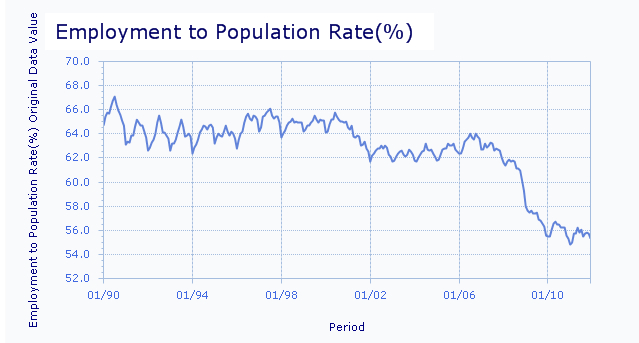In a recent post, Fergus Hodgson attempted to shed some light on national unemployment numbers by looking not at the unemployment rate, but at the employment-to-population ratio. The unemployment rate, he points out, is often politicized and doesn’t show the full picture. This critique is spot on. The unemployment rate is a measure of those actively seeking jobs, and does not reflect those workers that are no longer actively seeking employment. Thus, people who are on long-term unemployment benefits and have given up looking for jobs all together are not reflected in the unemployment rate.
Looking at the employment to population ratio is an alternative way to get a clearer picture of the unemployment situation. This statistic measures the percentage of the working-age non-institutional (not in jail, long-term care, etc) population that currently has a job. This graph below shows the employment-to-population ratio for North Carolina since 1990.
Source: Employment Security Commission of North Carolina
As you can see, since the recession began, North Carolina’s employment ratio has dropped from around 64% to around 56%, a whopping 8% drop. (The national drop was only about 5%). Furthermore, if we look at the data since 2010, we can see that the employment ratio has held constant over the last two years. Thus, it doesn’t seem that the so-called “recovery” of the last few years has succeeded at putting a larger proportion of North Carolinians back to work. On the contrary, this data makes suggests that the modest drop in unemployment that has been touted recently is a result of discouraged workers leaving the workforce, as opposed to the market adding new jobs.



